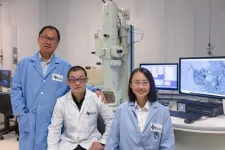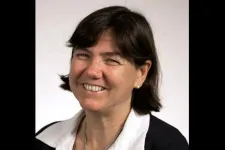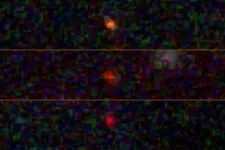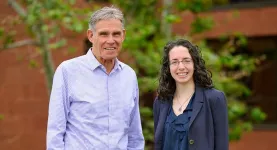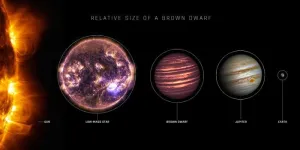(Press-News.org) Dozens of sessions at the Ecological Society of America’s upcoming Annual Meeting in Portland, Oregon, Aug. 6-11, will feature research on the ecology of the geographic and environmental region surrounding the conference venue: the Pacific Northwest and Cascadia Bioregion, which encompass a vast area stretching from northern California to southern Alaska.
The Pacific Northwest’s temperate rainforests are home to old-growth conifers and multiple threatened and endangered species. Its diverse marine and coastal environments host whales, puffins and vibrant kelp forests. The annual salmon runs in the region’s rivers sustain ecosystems and provide cultural significance. These landscapes and rich ecological communities provide an invaluable platform for scientific inquiry – and also face numerous environmental challenges.
The talks and posters listed below will be presented at the Ecological Society of America’s upcoming Annual Meeting, August 6-11, 2023. ESA invites staff journalists, freelance journalists, student journalists and press officers to register for free as media attendees up to and throughout the week of the Annual Meeting. For eligibility information, please visit ESA’s press registration credential policy page. Members of the media will be able to attend all scientific sessions at the conference and will have access to a press room where they can enjoy refreshments, internet access, a printer and an interview area.
For a longer list of presentations focused on the ecology of the Pacific Northwest and Cascadia Bioregion, please visit the full web version of this tip sheet.
Monday, August 7
2:00 PM - 2:15 PM
Restoration islands as a conservation tool: the case for the imperiled greater sage-grouse
Presenter: Scott Harris, Institute for Applied Ecology
Contributed Talk - COS 21
4:30 PM - 4:45 PM
Widespread foliage scorch in the wake of the 2021 heat dome heat wave in the Pacific Northwest: patterns, drivers of vulnerability, and lessons for future heatwaves
Presenter: Adam Sibley, Oregon State University
Contributed Talk - COS 31
5:00 PM - 6:30 PM
Drivers shaping plant communities recovering from disturbance at Mount St. Helens
Presenter: Tommy Conway, Washington State University
Contributed Poster
Tuesday, August 8
8:15 AM - 8:30 AM
A decade of beaver relocation led by the Tulalip Tribes: lessons learned and next steps
Presenter: Molly Alves, Utah State University/Tulalip Tribes
Organized Oral Session - OOS 13
9:15 AM - 9:30 AM
When the Black Swan shows up: the unprecedented but also totally precedented 2020 Labor Day fire event in the West Cascades
Presenter: Daniel Donato, Washington State Department of Natural Resources
Organized Oral Session - OOS 17
3:45 PM - 4:00 PM
Climate change effects on phenology of anadromous salmonids in Coastal Riverscapes of the Pacific Northwest
Presenter: Rebecca Flitcroft, USDA Forest Service, Pacific Northwest Research Station
Organized Oral Session - OOS 28
Wednesday, August 9
8:15 AM - 8:30 AM
Practices and Principles of Partnering with Tribal Nations in the Pacific Northwest Using Indigenous Knowledge (IK) to Restore Forest Resiliency to Wildfire and Climate Change
Presenter: Cristina Eisenberg, Oregon State University
Contributed Talk - COS 149
10:20 AM - 10:40 AM
Forest resilience to fire and interacting disturbances in the northwest US in a period of rapid change
Presenter: Brian J. Harvey, University of Washington
Symposium (In Person) - SYMP 16
3:30 PM - 3:45 PM
Divergent values and perspectives drive three distinct viewpoints on grizzly bear reintroduction in Washington, USA
Presenter: Anna Santo, University of British Columbia
Contributed Talk - COS 208
Thursday, August 10
10:15 AM - 10:30 AM
Ecological factors impacting distribution of ticks and tick-borne disease in Washington State
Presenter: Elizabeth Dykstra, Washington State Department of Health
Organized Oral Session - OOS 55
10:20 AM - 10:40 AM
Co-creating aquatic knowledge with and for Indigenous communities
Presenter: Danielle Ignace, The University of British Columbia
Symposium (In Person) - SYMP 24
3:45 PM - 4:00 PM
Lichen and moss bioindicators of air quality in the U.S. Forest Inventory: from forests to high elevation wilderness and urban neighborhoods
Presenter: Sarah Jovan, USDA Forest Service
Organized Oral Session - OOS 64
On-site Press Room
Location: Room A103, Oregon Convention Center, 777 NE Martin Luther King Jr Blvd, Portland, OR 97232
Press Room hours:
Sunday, August 6: 1:00 pm – 5:00 pm
Monday, August 7: 7:00 am – 5:00 pm
Tuesday, August 8: 7:00 am – 5:00 pm
Wednesday, August 9: 7:00 am – 5:00 pm
Thursday, August 10: 7:00 am – 5:00 pm
Phone number: (503) 963-5822
###
The Ecological Society of America, founded in 1915, is the world’s largest community of professional ecologists and a trusted source of ecological knowledge, committed to advancing the understanding of life on Earth. The 9,000 member Society publishes five journals and a membership bulletin and broadly shares ecological information through policy, media outreach, and education initiatives. The Society’s Annual Meeting attracts 4,000 attendees and features the most recent advances in ecological science. Visit the ESA website at https://www.esa.org.
For more information about the Ecological Society of America, visit www.esa.org or find us on Facebook, Twitter, LinkedIn, Instagram and YouTube.
END
University of Texas at Dallas scientists have discovered a previously unknown “housekeeping” process in kidney cells that ejects unwanted content, resulting in cells that rejuvenate themselves and remain functioning and healthy.
The self-renewal process, which is fundamentally different from how other bodily tissues are thought to regenerate, helps explain how, barring injury or disease, the kidneys can remain healthy for a lifetime. The researchers described the mechanism in a study published April 17 in Nature Nanotechnology.
Unlike ...
Rensselaer Polytechnic Institute’s Catherine Royer, Constellation Chair Professor of Bioinformatics and Biocomputation at the Shirley Ann Jackson, Ph.D. Center for Biotechnology and Interdisciplinary Studies (CBIS) and professor of biological sciences, has received a grant of over $400,000 from the National Science Foundation to investigate enzymes from organisms living in deep sea environments.
“Ultimately, I hope to better understand how these enzymes function under the high pressure that is present in the deep sea,” said Royer. “They also thrive in high or low temperatures. Biomolecules from the surface do not have the ability to survive these extreme ...
MIDDLETOWN, Pa. — An interdisciplinary team of researchers at Penn State is part of a project that recently received a $1 million National Science Foundation (NSF) Engines Development Award. The award will fund the development of the Pennsylvania Industrial Hemp Engine (PAIHE), which will support the manufacture and deployment of bio-based products for application in green building construction, packaging, fabrics, renewable energy and land remediation.
Launched by NSF’s new Directorate for Technology, Innovation ...
Stars beam brightly out of the darkness of space thanks to fusion, atoms melding together and releasing energy. But what if there’s another way to power a star?
A team of three astrophysicists — Katherine Freese at The University of Texas at Austin, in collaboration with Cosmin Ilie and Jillian Paulin ’23 at Colgate University — analyzed images from the James Webb Space Telescope (JWST) and found three bright objects that might be “dark stars,” theoretical objects much bigger and brighter than our sun, powered by particles of dark matter annihilating. If confirmed, dark stars could reveal the nature ...
The percentage of infants from the neonatal intensive care unit (NICU) experiencing hypothermia upon operating room (OR) arrival and at any point during the operation decreased from 48.7% to 6.4% and 67.5% to 37.4%, respectively, after implementation of a multidisciplinary quality improvement project at Ann & Robert H. Lurie Children’s Hospital of Chicago. The project and its success were featured in the journal Pediatric Quality and Safety.
About one-third of infants admitted to children’s hospitals’ NICUs require surgery and ...
Argonne is shaping the future of clean and reliable energy solutions.
Research into nuclear energy is gaining attention as a critical piece of the solution to climate change. As part of this trend, nuclear engineers at the U.S. Department of Energy’s (DOE) Argonne National Laboratory have received three new funding awards from the Gateway for Accelerated Innovation in Nuclear (GAIN) initiative. These awards recognize the valuable contributions of Argonne’s world-class nuclear engineers and facilities in this field.
Among ...
TUCSON, Ariz., July 13, 2023 — Critical Path Institute (C-Path), a leading global nonprofit committed to expediting drug development through the acceleration of regulatory-endorsed solutions, today announced a newly formalized Memorandum of Understanding (MOU) with Vivpro, an industry-leading provider of a revolutionary biointelligence software platform and innovative services. The partnership will enhance C-Path’s core competencies in accelerating drug development, by utilizing advanced data analytics and deep machine learning insights offered by Vivpro to further revolutionize ...
TUCSON, Ariz., July 12, 2023 — Critical Path Institute (C-Path) announced today that the Coordination of Rare Diseases based at Sanford Research (CoRDS), in partnership with Cure MITO, will contribute its mitochondrial disorders data from its international patient registry to the C-Path-managed Rare Disease Cures Accelerator-Data and Analytics Platform (RDCA-DAP®).
RDCA-DAP provides a centralized and standardized infrastructure to support and accelerate rare disease characterization targeted to accelerate clinical drug development. Additionally, the platform advances best practices to support the rigorous conduct of natural history ...
LA JOLLA, CA—Scripps Research announced today that the National Institutes of Health (NIH) has renewed funding for its Translational Institute to continue its work enrolling and engaging participants in the All of Us Research Program. The initial funding of $54 million will support Scripps Research Translational Institute’s work with a nationwide consortium to help build one of the largest, most diverse health research resources of its kind. The project is expected to last five years, with anticipated total funding ...
Astronomers at the University of Sydney have shown that a small, faint star is the coldest on record to produce emission at radio wavelength.
The ‘ultracool brown dwarf’ examined in the study is a ball of gas simmering at about 425 degrees centigrade – cooler than a typical campfire – without burning nuclear fuel.
By contrast, the surface temperature of the Sun, a nuclear inferno, is about 5600 degrees.
While not the coldest star ever found, it is the coolest so far analysed using radio astronomy. The findings are published today in The Astrophysical Journal.
Lead author and PhD student in the School of Physics, Kovi Rose, said: “It’s very rare ...
